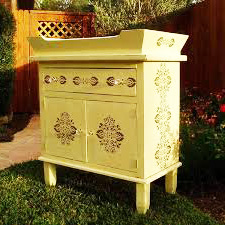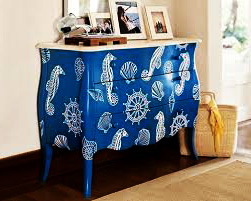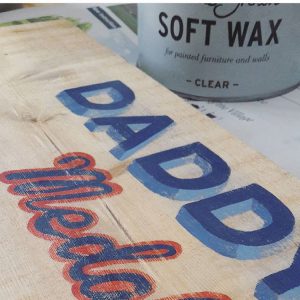Table of Contents
Painters everywhere often ask the question – what is milk paint? Milk paint has been used for thousands of years to paint furniture. Many people confuse milk paint and chalk paint, thinking they are the same thing; however, they are quite different. Milk pain is thin and once dry look more like stain than paint.
This highly pigmented paint dries very quickly and can be distressed by simply rubbing a damp cloth over the paint once it is dry. Additionally, once the paint is dried, other milk paint colors can be added to create a unique “stain” to many wood pieces.
Because of the thinness of the paint, it does not leave brush strokes. This thin paint glides across the surface of the wood and allows the wood grain to show through the paint. Milk paint soaks into the wood, and once dry, the milk paint will be an almost translucent color wash.
If you want to learn about milk paint but don’t want to spend money on manufactured milk paint, you can make your own. One of the best recipes for milk paint uses skim milk, lemon and either dry color pigment or acrylic paint. The following recipes will help you determine what is milk paint and how it can be used to produce gorgeous looking painted furniture.
Homemade Milk Paint Recipe
Juice a lemon and mix it with a quart of skim milk. Place mixture in a large bowl and allow to set out overnight at room temperature. This technique will cause the milk to curdle.
The next morning pour the milk through a cheesecloth to remove the curds. (For best results, most recipes recommend running the mixture through cheesecloth a couple of times.)
Add approximately four tablespoons of dry pigment to the milk mixture and stir until blended. If you cannot find dry color pigment, you can use acrylic paint. However, for best results, use a highly pigmented artists’ quality acrylic paint. Add one drop of acrylic paint at a time and stir well between drops until you get the desired color.
This paint will smell like soured milk; however, once the paint dries, the smell will evaporate and leave you with a beautiful scent free project.
Milk paint is best applied with a nylon bristle brush; however, foam brushes and natural bristle brushes can be used. Because of the paint’s thinness, the brush used is not as important as the amount of paint used on a piece. Because of its high pigmentation, a little bit of milk paint goes a long way.
The characteristics of this paint often depends on the type of wood that is painted, the temperature and humidity and the wood’s water content. For example, if the wood’s water content is high, the paint will soak into the wood and may raise the wood’s grain. If this happens, once the paint is dry, gently sand the piece with a 320 grit piece of sandpaper and apply a second coat of milk paint.
Once you have applied your milk paint, you will need to apply a layer of soft wax to protect the piece. Apply a small amount of wax to the painted piece, allow the wax to dry overnight and then use a soft, clean cloth to buff the piece to the desired sheen.
With all the information in this piece, you will no longer be wondering, “what is milk paint?” You now know what milk paint is, how to make milk paint and how to apply it to your wooden furniture. Once applied and waxed, your milk painted furniture can look good for a lifetime.


